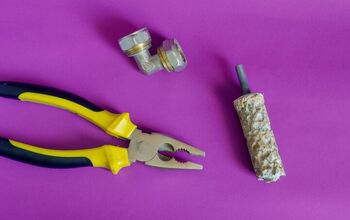What Is The Best Water Heater Temperature Setting?

Water heaters are a modern commodity and convenience that every home has. Without a water heater, you wouldn’t be able to safely wash your hands or take comfortable showers. However, sometimes, homeowners can be left in the lurch wondering what the best temperature setting is for their water heater.
The best water heater temperature setting is between 120 and 140 degrees, and both temperatures fight harmful bacteria. The EPA recommends 120 degrees, whereas OSHA recommends that the ideal temperature is 140 degrees. Because of that, most water heaters are set to 140 degrees, but there is a dial so that you can adjust it.
Changing your water heater’s temperature is simple, but it varies between gas and electric units. Follow along as we explain the ins and outs of the perfect water heater temperature, and how to change the setting.
Do You Need Water Heater Repair Services?
Get free, zero-commitment quotes from pro contractors near you.

Water Temperature Settings
Water heater temperature settings can be confusing, but not if you know what to look out for. Generally, the optimal water heater temperature settings run between 120 and 140 degrees, with the latter being the recommended maximum. You must be careful, however, as temperatures at or exceeding 140 degrees can lead to dangerous scalding.
The sweet spot for water heater temperature settings is 120-130 degrees. That temperature range provides ample heat to fend bacteria and germs without posing a risk of pain or harm. Turning your water heater settings too low, i.e. 100-120 degrees is manageable, but not quite high enough to do the job.
With that said, water heater manufacturers set the temperature for you in the factory, but it can be adjusted. Water heaters are generally factory set to be 140 degrees, but it varies from manufacturer to manufacturer. It’s important to know how to adjust your water heater temperature settings so that you can achieve the temperature best suited for you.
Increase Water Heater Temperature
If and when you need to increase your water heater temperature, you must do it carefully. Luckily, you can easily increase the temperature by simply using the convenient knob located on most water heaters. Often, the temperature maxes out at 140 degrees as per OSHA regulations, but they can reach 160.
Adjusting the Temperature on a Gas Water Heater
It’s generally easier to increase the temperature on a gas water heater than an electric one. Gas water heaters are easy due to the knob and clear temperature settings that usually have an 80-degree minimum. First things first, you need to identify where the knob is, and it’s generally found at the bottom of the tank.
You’ll notice that most gas water heater knobs have arrows or triangles that point to the factory’s preferred temperature. On the dial, you will see at least three other temperature settings: A, B, and C.
- A- 130 Degrees
- B- 140 Degrees
- C- 150 Degrees
The “hot” setting represents the factory standard 120-140 degree temperature setting that is recommended. Sometimes, gas water heaters have a “Low” setting that is 80-110 degrees, but that is less than ideal. All that you need to do is adjust the knob to the setting that you prefer while referring to your water heater’s manual and the according letter assigned temperatures.
NOTE: You can save yourself money by utilizing the low setting anytime that you are gone for the day or on vacation. Choosing the low setting while away from the house lowers your energy consumption. Always remember to re-adjust the knob when you get back and allow ample time for the temperature to rise.
How to Adjust An Electric Water Heater Temperature
It can be slightly trickier to adjust the temperature setting on an electric water heater than a gas one. The reason that it’s more complicated is that there are often two thermostat dials with correlating heating elements in electric heaters. If you are having trouble with the unit responding, you may need to test your water heater thermostat.
1. Turn Off the Power
Gain access to your circuit breaker and shut off the power to your electric water heater. It is dangerous to adjust an electric water heater if it is still powered on, and you should never attempt to.
2. Access the Thermostats
Identify the thermostats on your electric water heater. Generally speaking, they can be found underneath protective panels for your safety. To access the thermostats, you will need to use a screwdriver to remove the panels before you can touch them.
Be sure to hold onto the screws as you will need to put the panels back on once you’ve adjusted the temperature. Most electric water heaters have one low thermostat and another that is placed higher up. There is a chance that there is insulation covering the thermostats, particularly if it’s an older unit.
In that case, carefully remove the insulation using a knife. Later on, you can put the insulation back by carefully using tape. Not all electric water heaters have insulation over the thermostats, but it’s common with older or outdoor models.
3. Adjust the Thermostats
The thermostat dials on your electric water heater will be marked similarly to that of a gas-powered unit. You simply shift the dial to your desired temperature to make the change. The only problem with electric units is that it’s trickier to change the setting to low when you leave town.
Either way, you will need to adjust both thermostats to change the temperature. Try to set both thermostats to the same setting, whether it be A, B, or C. Failure to set both thermostats to the same temperature setting can create inconsistency and it won’t be good for the water heater.
4. Reattach the Panels
If your electric heater had insulation over the thermostats, you’ll need to reattach it. You can safely do so by using tape if need be. After that, you will need to reattach the panels by screwing them back into place with your screwdriver.
Once your panels are safely reattached to the thermostats, you can restore power to them. Return to the circuit breaker and power it back on. It can take between 30 and 60 minutes for a water heater to heat up, so be patient while it goes to work.
What Affects Water Temperature?
The layout and installation of your water heater are what ultimately affects your home’s water temperature. Of course, adjusting the setting plays a huge role, but the reason it needs to be adjusted often has to do with the piping. The distance and path of the pipes leading into your water heater often affect the temperature and how long the water takes to heat up.
Another major factor is whether or not your water pipes run outside, or even beneath the house. External water pipes can get cold, freeze up, and take a long time to heat up, and you may need to increase the heat. However, if you simply are not able to get the water warm, it could indicate that the heating element is broken.
Heating elements generally last between 5 and 10 years, but they can last longer. The critical component of a heating element is the anode, and if you maintain and replace your anodes, your heater can last 10-12 years or more. Sometimes, the problem is as simple as a faulty thermostat, and it may just need to be replaced.
OSHA Water Heater Setting
The Occupational Safety & Health Administration, or OSHA, recommends that your water heater be set to 140 degrees. Because of that, the arrow or triangle notch on your water heater dial will almost always be set to 140. The reason that this temperature prevents the growth and spread of harmful bacteria that pose health risks.
On the other hand, the Environmental Protection Agency, or EPA, clearly recommends 120 degrees. Both temperatures are enough to kill and prevent harmful bacteria from growing, so either one is safe. If you want to play it safe, consider sticking to the OSHA sanctioned 140-degree temperature.
Related Questions
Does lowering water heater temperature save money?
Yes, lowering water heater temperature can save up to 15% on your bills each year. If you lower the temperature by 20 degrees to bring it to 120 degrees, you stand to save the most. Other practices, such as taking short showers, limiting hot water usage, and not letting the water run can save money.
Do water heaters leak?
Yes, water heaters can leak, and they need to be fixed right away if they do to prevent damage. Leaking water heaters can cost hundreds or thousands of dollars in damage. You generally get 10 years out of a water heater, but it is common for leaks to occur within that time and need to be repaired.
Can water heaters explode?
Yes, water heaters can explode if the temperature and pressure become too high. Gas water heaters can explode due to pressure increases, or more commonly, dangerous gas leaks, which can also cause fires. Luckily, there are safety measures taken by water heater manufacturers to regulate the pressure and temperature.
Do You Need Water Heater Repair Services?
Get free, zero-commitment quotes from pro contractors near you.

Summing It Up
The ideal and most safe temperature for a water heater is between 120 and 140 degrees. For gas heaters, you simply need to adjust the knob to change the temperature. However, electric units require you to power them off, remove the panels, and change both thermostats.
You can easily save money by setting your water heater to low if you are on vacation or even gone for the day. At the end of the day, you want your temperature setting to be at least 120 to kill bacteria. Anything above 140 degrees, however, would be dangerous and could cause scalding.
Exercise caution when you adjust your water heater’s temperature setting. Hopefully, you can get your water heater to the temperature that makes you the most comfortable.

Nick Durante is a professional writer with a primary focus on home improvement. When he is not writing about home improvement or taking on projects around the house, he likes to read and create art. He is always looking towards the newest trends in home improvement.
More by Nick Durante














![Finishing Basement Without Permit [Is It Really Illegal?]](https://cdn-fastly.upgradedhome.com/media/2023/07/31/9070078/finishing-basement-without-permit-is-it-really-illegal.jpg?size=350x220)












